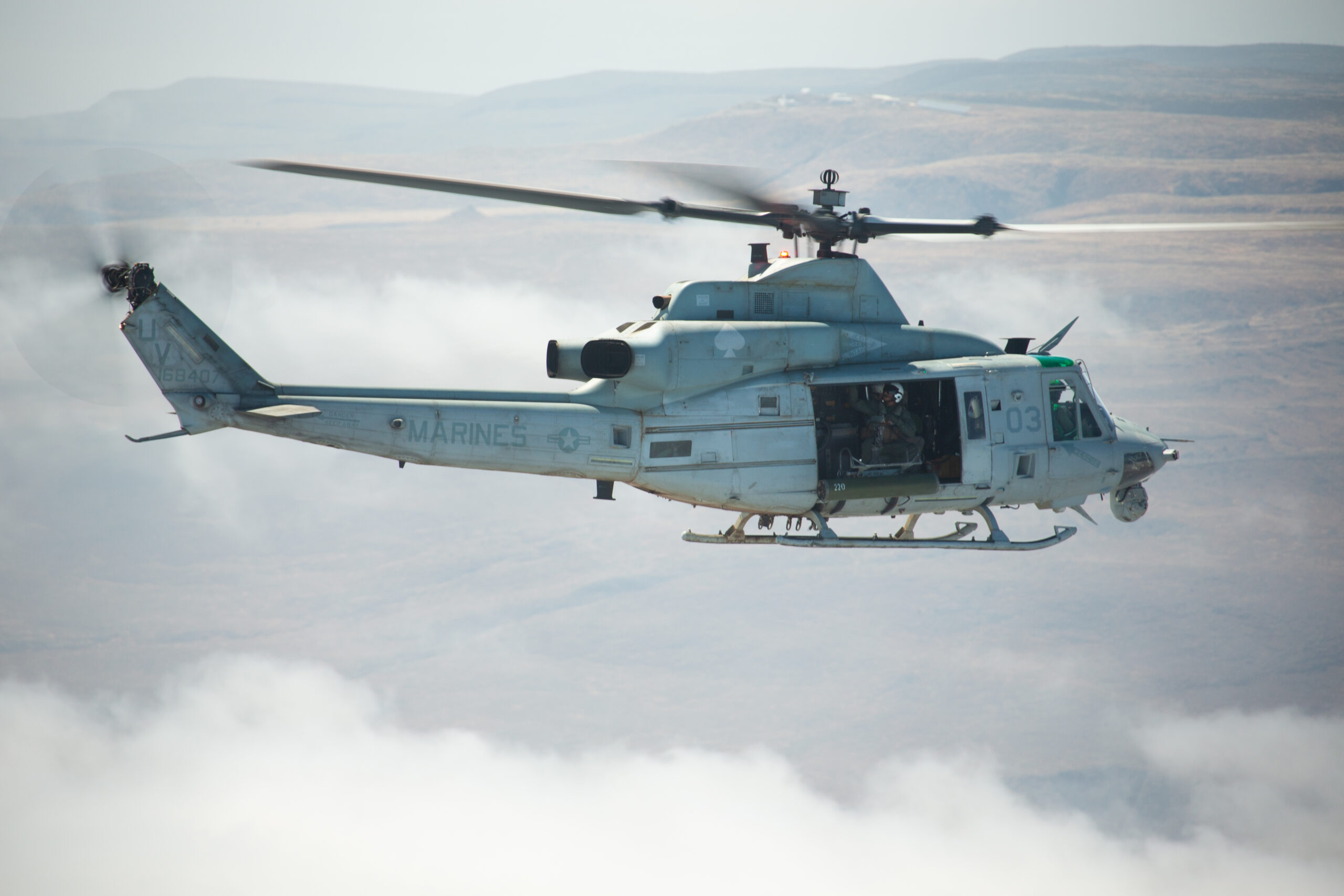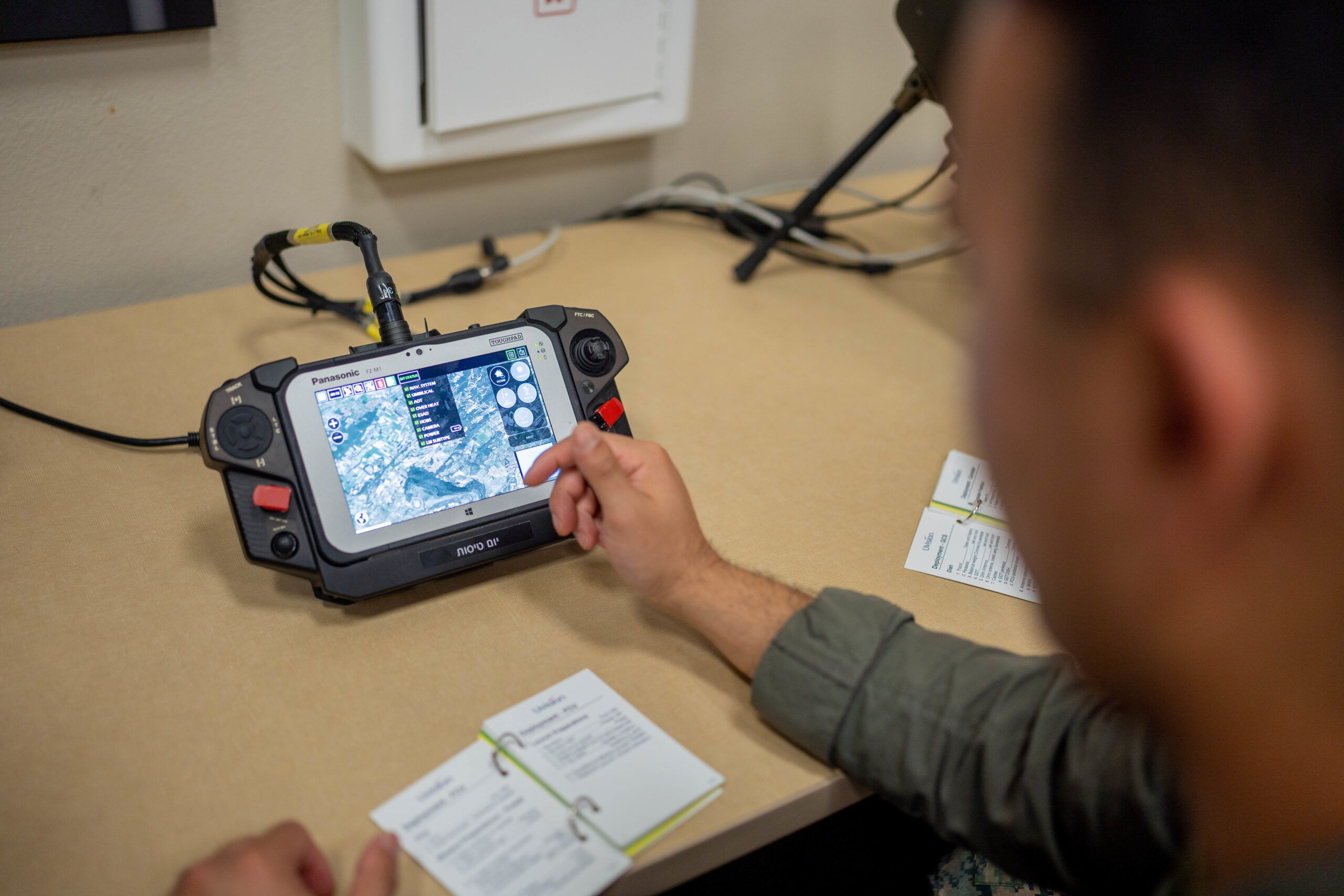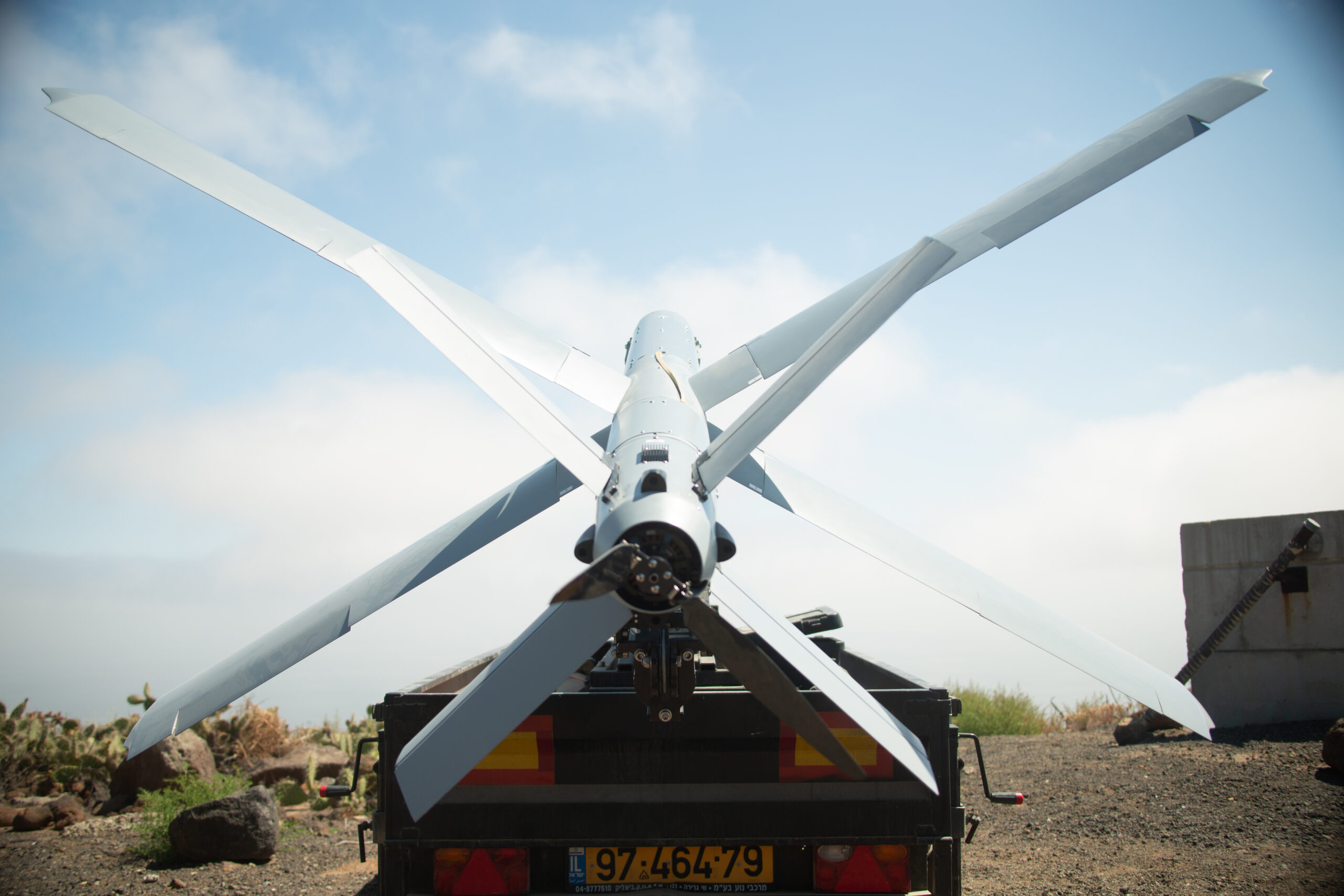Marines on the West Coast have been training to team Israeli-made suicide drones with helicopters and small boat crews to provide extra eyes in the sky and a potential maritime strike capability. A recent training event demonstrated that control of a Hero-400EC loitering munition could be handed off between land, air, and sea-based assets, providing significant operational flexibility in coastal environments where Marines expect to fight in future conflicts.
During the training exercise, the 3rd Marine Aircraft Wing (MAW) launched a Hero-400EC from San Clemente Island off the coast of California. Land-based operators then passed control of the drone to crew members aboard a Bell UH-1Y Venom helicopter, which then gave control of the system to Marines aboard small unspecified watercraft, according to Maj. Mason Engelhart, a spokesman for 3rd Marine Aircraft Wing.

Made by Israel-based UVision, which also has a U.S. subsidiary, the Hero-400EC is an electrically-powered precision loitering munition that weighs just under 90 pounds. The “EC” stands for “electric, cruciform,” for its propulsion type and four wings that give it a cross shape in flight.
With an integrated electro-optical/infrared (EO/IR) seeker, remote sensors, and GPS antenna, it can locate, track, and strike both static and moving targets with a 22-pound warhead. Deployed using a land-based catapult or a standardized canister launch system designed to be mounted on vehicles, the Hero-400EC can stay aloft for two hours and has a range of about 25 miles with a line-of-sight datalink. UVision says the munition can be configured for a range up to 93 miles. An operator uses a portable video game-style controller with an integrated screen that shows what the drone’s EO/IR sensor sees, as well as navigational info, and can be used for targeting.

The Marine Corps and “other Department of Defense entities are beginning to incorporate” the Hero-400EC into “specific mission sets,” according to captions accompanying pictures of the recent Southern California training event. That could include other military services, Special Operations Command, or agencies like the Defense Advanced Research Projects Agency (DARPA). It is not clear precisely what mission profiles the Hero-400EC was trialed for at the training event, which aimed to develop the UAS pilots’ confidence and ability to operate the Hero-400EC in multiple climates and operational environments, according to the Marine Corps.

Before the real-world training, members of Marine Aircraft Group 39, attached to 3rd MAW, attended a Hero Aerial Loitering Munitions and Effects (ALME) introductory training course at Camp Pendleton, California. Led by UVision-USA instructors, the course provides hands-on and simulation training with the UAS and its control system.
Loitering munitions provide reconnaissance and targeting capabilities packaged together with a warhead that allows precision strikes. They essentially are guided missiles that can be “un-fired” if a suitable target is not found or a tactical situation changes after launch. Because the Hero-400EC can parachute back to earth for recovery, troops can deploy it as a reconnaissance asset or reuse it if a strike mission is aborted or surveillance alone was needed in the first place.
That gives the operator an added benefit over anti-tank guided missiles (ATGMs) and some other suicide drones that are essentially lost as soon as they are fired, whether or not they destroy a target. The Hero-400EC’s long loitering time also provides for far better situational awareness and the ability to strike targets of opportunity.

Recognizing the tactical advantages of loitering munitions, both the Marine Corps and the Army have begun fielding various designs. The Army operates the AeroVironment Switchblade 300 man-portable, tube-launched kamikaze drone system that is also being supplied to Ukraine for use against Russian forces. The Defense Department is also providing Ukraine with a limited number of larger Switchblade 600 drones that operate the same way but are capable of killing tanks and other armored vehicles. Northrup Grumman has partnered with UVision to create a hybrid Hero drone that could be used as an air-launched effect, or ALE, shorthand for various unmanned systems launched from aircraft that can then be controlled by the aircraft crew or fly autonomously and feed information back to both the helicopter and networked ground troops. They can also provide kinetic or electronic warfare attacks, as well as act as decoys.
Marines already have their hands on smaller UVision Hero-120 loitering munitions through the Organic Precision Fires-Mounted (OPF-M) program, which seeks to arm 8×8 LAV-25-series wheeled armored vehicles with precision strike capabilities.

UVision is working together with Maryland-based Mistral, Inc. to deliver those Hero-120s in a Marine-specific configuration. The broader OFP program, which dates back to 2018, also includes plans to acquire smaller, man-portable loitering munitions for dismounted use.
The Marines’ Hero-120 comes in an eight-cell Multi-Canister Launcher (MCL) that is also capable of launching the larger 400 series and any other version of the loitering munition like the Hero-30. All these weapons are launched from an MCL via preloaded launch canisters, making it easier to load the desired types based on the situation or reload the entire launcher.
Adopting loitering munitions that can be launched and controlled from land, sea, and air platforms, and handed off between them in flight, fits the Marine Corps’ plan to restructure as a lighter, more agile maritime force under the Force Design 2030 initiative. Teaming strike-capable drones with helicopters could give the Marine Corps greater maritime surveillance and reconnaissance capabilities. The apparent success of a land-based launch and subsequent handoff to air and sea-based assets would provide significant mission flexibility with a single unmanned system.
For instance, a Hero drone could be launched from an amphibious ship out at sea, then passed to a helicopter operating in between the ship and the coast, and then controlled by Marines in rubber boats near the shore. The Marine Corps is keen to provide heavier weapons to smaller teams, like Javelin ATGMs and Stinger man-portable air defense systems (MANPADS) launched from rubber rafts and other small watercraft. Being able to take advantage of munitions already in the air nearby on the fly, or to just maximize their usefulness, in general, is a major step forward, too. Beyond that, such a concept of operations would allow over-the-horizon operations for long-range loitering munitions while still maintaining line-of-sight control, thus maximizing the weapon’s range abilities without being hampered by lack of a satellite datalink or other beyond-line-of-sight networking architecture.

Allowing personnel in nearby manned aircraft or on the ground to take direct control of an orbiting drone or guided munition could dramatically shorten the time it takes to locate, identify and engage a target. A Hero drone can be launched from one location, steered toward troops in contact by others in a helicopter or small boat and then passed off to the forces who know exactly where a threat is located.
If anything else, this test is another glimpse of what’s to come in terms of future combat operations in the littorals, which will be highly integrated, conducted over extended ranges, and fought with smaller forces scattered over large areas with access to highly capable precision-guided weaponry on demand.
Contact the author: Dan@thewarzone.com
